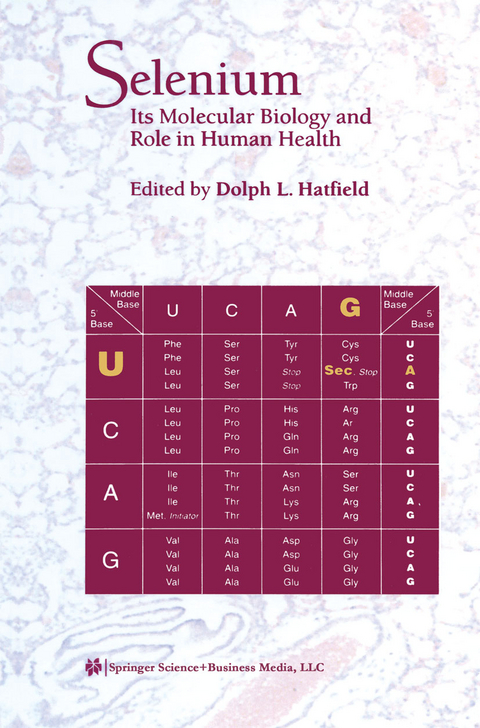
Selenium
Springer-Verlag New York Inc.
978-1-4613-5639-4 (ISBN)
As discussed in this book, a large body of evidence indicates that selenium is a cancer chemopreventive agent. Further evidence points to a role of this element in reducing viral expression, in preventing heart disease, and other cardiovascular and muscle disorders, and in delaying the progression of AIDS in HIV infected patients. Selenium may also have a role in mammalian development, in male fertility, in immune function and in slowing the aging process. The mechanism by which selenium exerts its beneficial effects on health may be through selenium-containing proteins. Selenium is incorporated into protein as the amino acid selenocysteine. Selenocysteine utilizes a specific tRNA, a specific elongation factor, a specific set of signals, and the codeword, UGA, for its cotranslational insertion into protein. It is indeed the 21st naturally occurring amino acid to be incorporated into protein and marks the first and only expansion of the genetic code since the code was deciphered in the mid 1960s.
1 Introduction.- I. Biosynthesis of selenocysteine and its incorporation into protein.- 2 Selenium metabolism in bacteria.- 3 Mammalian selenocysteine tRNA.- 4 Selenophosphate — selenium donor for protein and tRNA.- 5 SECIS elements.- 6 SECIS binding proteins.- 7 Towards a mechanism for selenocysteine incorporation in eukaryotes.- 8 Regulation of selenoprotein expression.- II. Selenium-containing proteins.- 9 Identity, evolution and function of selenoproteins and selenoprotein genes.- 10 Bacterial selenoenzymes and mechanisms of action.- 11 Selenoprotein P.- 12 Selenoprotein W: A muscle protein in search of a function.- 13 The 15 kDa selenoprotein (Sep15): functional studies and a role in cancer etiology.- 14 Selenoproteins of the glutathione system.- 15 Selenoproteins of the thioredoxin system.- 16 Selenium, deiodinases and endocrine function.- III. Selenium and human health.- 17 Selenium as a cancer preventive agent.- 18 Selenium deficiency and human disease.- 19 Selenium as an antiviral agent.- 20 Role of selenium in HIV/AIDS.- 21 Effects of selenium on immunity and aging.- 22 Selenium and male reproduction.- 23 Role of low molecular weight, selenium-containing compounds in human health.- 24 Evolution of human dietary standards for selenium.- 25 Selenium in biology and human health: controversies and perspectives.
| Zusatzinfo | XIX, 326 p. |
|---|---|
| Verlagsort | New York, NY |
| Sprache | englisch |
| Maße | 155 x 235 mm |
| Themenwelt | Sachbuch/Ratgeber ► Natur / Technik ► Garten |
| Medizin / Pharmazie ► Gesundheitsfachberufe ► Diätassistenz / Ernährungsberatung | |
| Medizin / Pharmazie ► Medizinische Fachgebiete ► Mikrobiologie / Infektologie / Reisemedizin | |
| Medizin / Pharmazie ► Medizinische Fachgebiete ► Onkologie | |
| Naturwissenschaften ► Biologie ► Biochemie | |
| Naturwissenschaften ► Biologie ► Zoologie | |
| ISBN-10 | 1-4613-5639-3 / 1461356393 |
| ISBN-13 | 978-1-4613-5639-4 / 9781461356394 |
| Zustand | Neuware |
| Haben Sie eine Frage zum Produkt? |
aus dem Bereich


